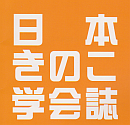All issues

Volume 28 (2020 - 202・・・
- Issue 4 Pages 152-
- Issue 3 Pages 93-
- Issue 2 Pages 48-
- Issue 1 Pages 7-
Volume 28, Issue 1
Displaying 1-3 of 3 articles from this issue
- |<
- <
- 1
- >
- >|
-
Shinji YAMASHITA, Kota AKADA, Satoshi MATSUMOTO, Mikio KINOSHITA2020 Volume 28 Issue 1 Pages 7-14
Published: 2020
Released on J-STAGE: July 14, 2021
JOURNAL OPEN ACCESSIn recent years, the incidence of intestinal impairments, such as colon cancer and inflammatory bowel disease (IBD), has been increasing in East Asian countries. Healthy dietary habits, as well as taking dietary supplements, are seen as important to preventing these impairments. Mushrooms and the hydrophilic fraction are commonly recognized for multiple nutritious functions, while the function of the lipophilic fraction remains uncertain. In this study, we investigated the effects of the lipophilic fraction containing sphingolipids, extracted from Pleurotus citrinopileatus (golden oyster mushroom), on mice suffering from chronic colon inflammation by treatment of dextran sulfate sodium salt (DSS) as IBD models. In the experiment, mice were fed with (1) control AIN-76 standard diet or (2) AIN-76 diet supplemented with 1% ethanol extract from fruiting bodies of golden oyster mushroom (GOMEE) or (3) AIN-76 diet supplemented with 5% GOMEE. Subsequent to experimental diets for 10 days, mice were drinking water ad libitum supplemented with DSS. We found that in mice ingesting DSS for 26 days, dietary GOMEE suppressed the body weight reduction and the spleen weight increase by administration of DSS. Dietary GOMEE decreased DSS-induced chorionic crypt injury, and the ameliorative effect by 5% GOMEE diet was stronger when compared to the 1% GOMEE diet. Moreover, we researched the impact of GOMEE on the early/middle stage of inflammation in colon mucosa, by assessing levels of inflammation-related cytokines in mice ingesting DSS for 18 days. The levels of almost inflammatory cytokines and chemokines examined in the colon were significantly increased due to DSS ingestion. Dietary 5% GOMEE was correlated with a significant decrease in the levels of 5 inflammatory cytokines and 5 chemokines. These results suggested that dietary GOMEE contributes to suppression of colon inflammation and the effect is dose-dependent.View full abstractDownload PDF (1942K) -
Hiroharu TOKUDA, Haruka NOMURA, Takayuki KAZUOKA, Hiroto HOMMA, Toru M ...2020 Volume 28 Issue 1 Pages 15-20
Published: 2020
Released on J-STAGE: July 14, 2021
JOURNAL OPEN ACCESSIn this study, we screened several basidiomycetes for the removal of 2-mercaptobenzothiazole (MBT) and successfully identified Pleurotus ostreatus SKB019, Auricularia polytricha SKB033 and Pleurotus eryngii NBRC32798, which were capable of removing MBT from MBT-containing solution (MBT removal rate: >95%). Among the basidiomycetes, A. polytricha SKB033 exhibited a highly stable MBT removal rate, and repeated batch removal of MBT using A. polytricha SKB033 immobilized on a non-woven fabric made of polyester and rayon was successfully accomplished 15 times for more than 360 h.View full abstractDownload PDF (1731K) -
Tooru FUJITA, Hiromi FUJITA2020 Volume 28 Issue 1 Pages 21-26
Published: 2020
Released on J-STAGE: July 14, 2021
JOURNAL OPEN ACCESSJapanese red pine is a host of the mushroom, Tricholoma matsutake. This study aimed to optimize a method for guiding the growth of Japanese red pine roots to the soil surface to induce mycorrhizal formation in Tricholoma matsutake. A ground cover experiment was conducted in a forested area in which the mineral soil layer was exposed by scraping the topsoil. The scraping strength required to expose the mineral soil layer was clarified and the surface of the treated area was covered with a variety of substrates. Finally, the number of growing pine root tips at the soil surface was enumerated in the treated area. Consequently, a method involving covering the soil with nonwoven fabric and soil, or soil-filled sandbags, was found to be the most effective for guiding the growth of roots to the soil surface. Further trials are necessary to clarify the optimal scraping strength as this may vary depending on the forest environment.View full abstractDownload PDF (1710K)
- |<
- <
- 1
- >
- >|